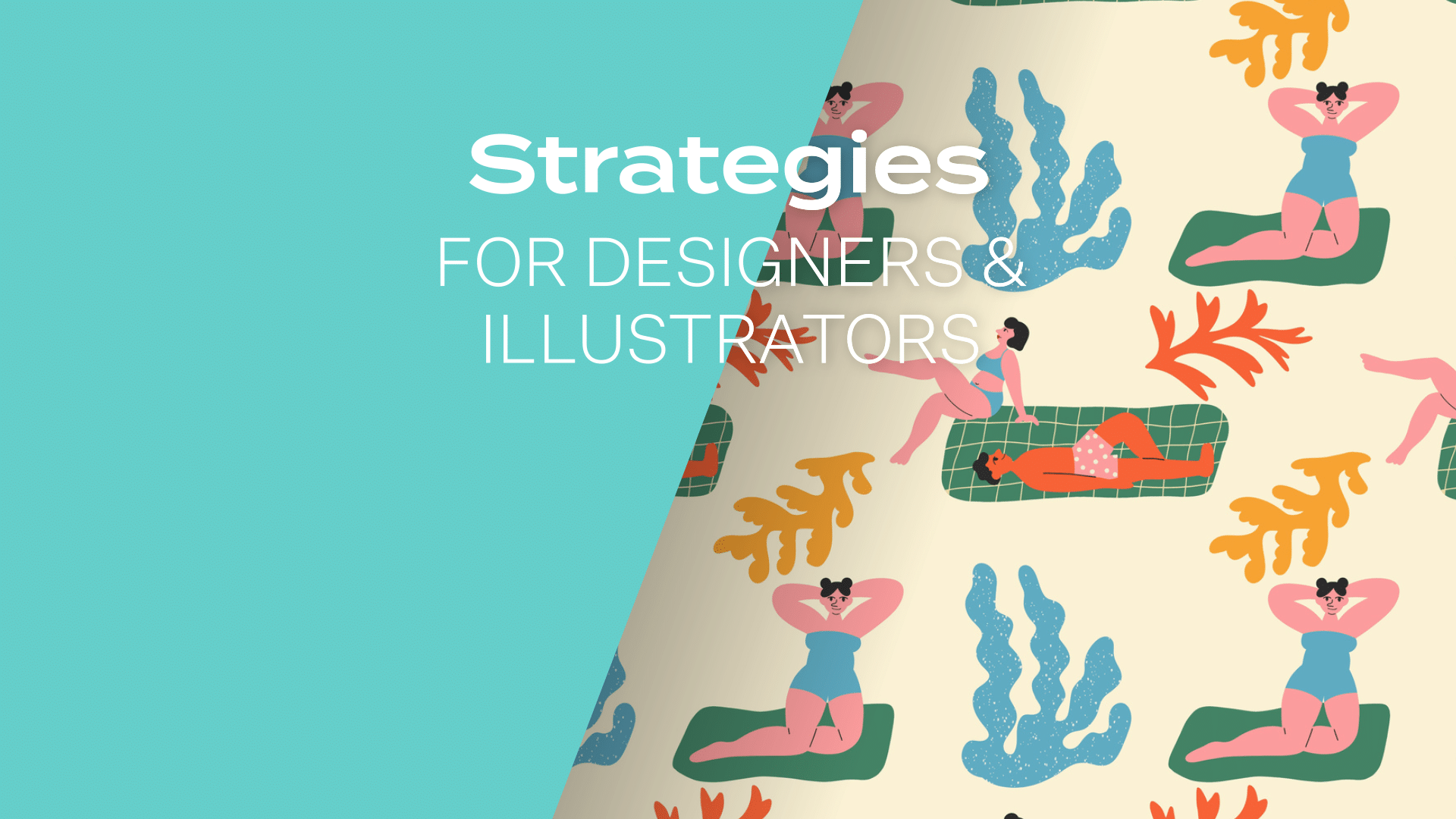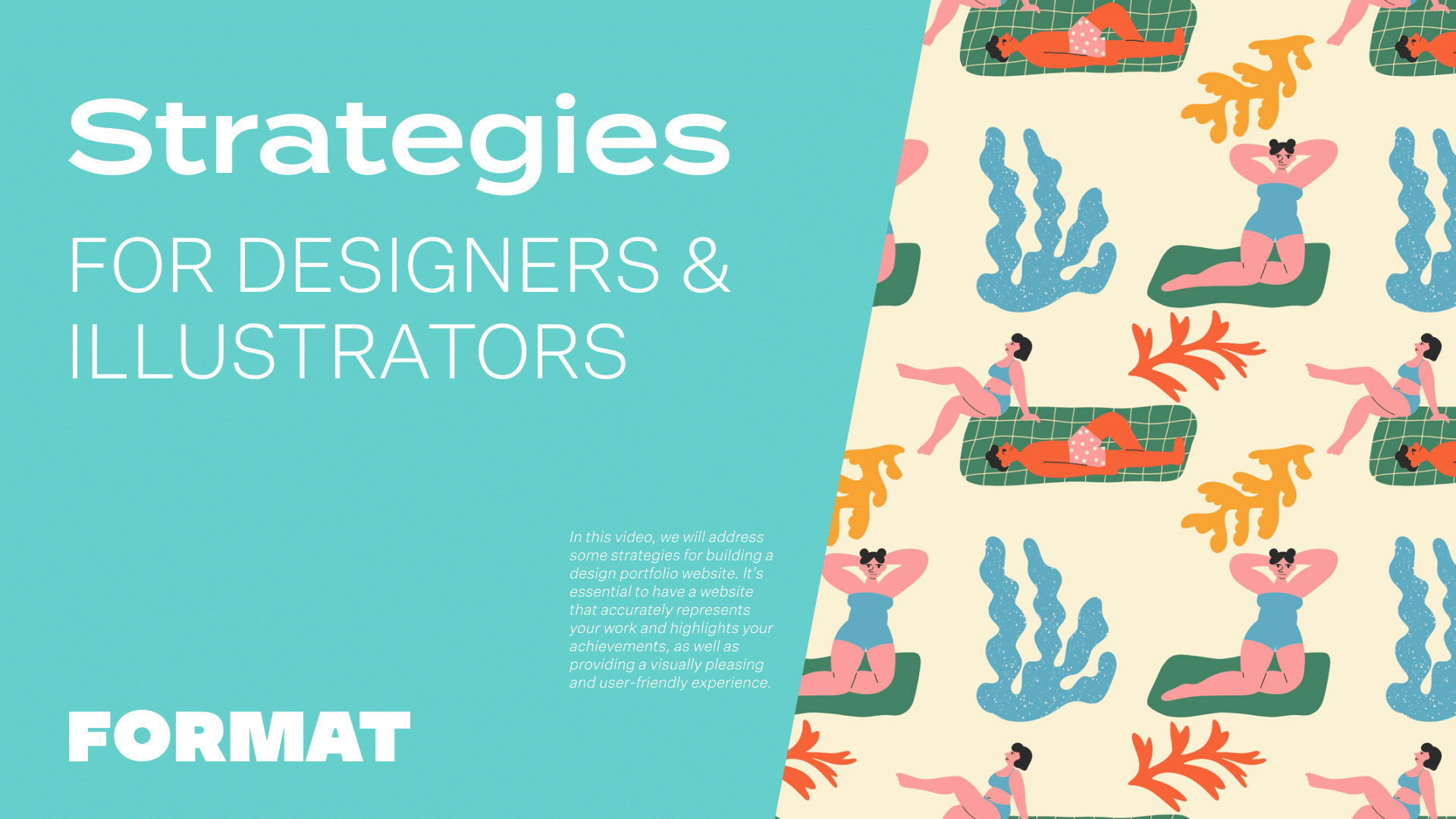In diesem Video zeigen wir dir einige Strategien für die Erstellung einer Designportfolio-Website. Als Designer/in ist dein Portfolio deine berufliche Visitenkarte. Mit ihr kannst du potenziellen Kunden und Arbeitgebern deine Fähigkeiten und Erfahrungen zeigen.
Es ist wichtig, dass deine Website deine Arbeit und deine Erfolge richtig darstellt und gleichzeitig optisch ansprechend und benutzerfreundlich ist.
In diesem Video werden wir besprechen, wie du eine Website erstellen kannst, die deine einzigartigen Talente hervorhebt. Hier sind einige wichtige Faktoren, die du beachten solltest:
1. Finde ein Thema, das zu dir passt
Themen auf Format beeinflussen das Layout deiner Galerieseiten, deines Menüs und deiner Sammlungsseiten. Die Attribute und Anpassungsmöglichkeiten sind von Thema zu Thema unterschiedlich, daher ist es eine gute Idee, die Themen in der Vorschau mit deinen eigenen Bildern zu testen. Lade ein paar Bilder auf einer Galerieseite hoch und wechsle zwischen den Themes, um ein Layout zu finden, das dir am besten gefällt.
Für Designer/innen empfehle ich in der Regel Themes mit einer betitelten oder gestaffelten Galerieseite, damit potenzielle Kund/innen schnell einen Eindruck von deinem Stil bekommen können. Es kann sein, dass sich Kunden die Websites vieler Designer/innen ansehen, die für einen Auftrag in Frage kommen. Mach es ihnen also leicht, sich ein Bild von dir und deiner Arbeit zu machen.
Für gekachelte und gestaffelte Galerien empfehle ich Themen wie: Slate, Amazon, Lasso, Shapes
2. Nutze deine Navigation und deine Sammlungsseite, um die Geschichte deiner Fähigkeiten zu erzählen
Wenn du Freiberufler bist oder dich an Geschäftskunden wendest, strukturiere das Menü deiner Website nach den Arten von Dienstleistungen, die du anbietest, um zu unterstreichen, was du für deine Kunden tun kannst.
Überlege auch, ob du deine Homepage zu einer Sammlungsseite machen willst, die die Geschichte deiner Dienstleistungen erzählt. Eine Sammlungsseite ist eine Bildnavigation. Nutze die Sammlungsseite, um auf Galerien zu verlinken, die sich jeweils auf eine Dienstleistung oder Fähigkeit beziehen, die du hervorheben willst. Um diese Art von Sammlungsseite zu erstellen, verwende Themen wie: Exhibition, Stockholm, Sharp, oder Still
3. Präsentiere Projekte als Fallstudien deines Talents
Eine der wichtigsten Fähigkeiten, die ein/e Designer/in vorweisen kann, ist, wie er/sie eine Projektvorgabe in ein tolles Design umgesetzt hat. Gehe nicht davon aus, dass Bilder allein diese Geschichte erzählen. Füge Textelemente und Beschreibungen auf deinen Seiten hinzu. Füge Informationen hinzu, z. B. wie du ein Design-Briefing umgesetzt hast, deine Strategien für das Projekt, einen Überblick über die Vorteile und mehr.
Auf deinen Format-Seiten gibt es viele Möglichkeiten, Text hinzuzufügen. Füge Textunterschriften zu deinen Bildern hinzu und verwende Textelemente innerhalb eines Galerie-Feeds für längere Textblöcke. Wenn du mehr Formatierungsmöglichkeiten brauchst, bieten dir benutzerdefinierte Seiten eine Vielzahl von Werkzeugen zum Einfügen von Bildern und Text.
4. Benutzerdefinierte Seiten für Kontakt-, Über uns- und Lebenslaufseiten
Benutzerdefinierte Seiten sind genau das, wonach sie klingen: anpassbare Seiten, auf denen du mit verschiedenen Inhaltsblöcken dein eigenes Layout gestalten kannst. Designer verwenden benutzerdefinierte Seiten häufig für Kontakt-, Info- und Lebenslaufseiten. Wenn du zum ersten Mal eine benutzerdefinierte Seite erstellst, hast du die Möglichkeit, von Grund auf neu zu beginnen oder eine Vorlage zu verwenden - beide Optionen sind vollständig anpassbar. Besonders für Lebensläufe empfehle ich dir, eine unserer Vorlagen zu verwenden. Diese Vorlagen wurden von unseren Designern so gestaltet, dass sie bei der Optimierung für Mobilgeräte gut aussehen.
Wenn du diese Seiten erstellst, achte darauf, wie die Absätze und Abschnitte für die mobile Anzeige angeordnet werden. Wenn du an einer Seite arbeitest, klicke auf "Design bearbeiten" und schalte auf die mobile Anzeige um, um dein Seitenlayout zu überprüfen.
5. Nutze die besten Medien, um deine Geschichte zu erzählen
Viele Designerinnen und Designer spannen den Bogen zwischen Grafik-, Bewegungs- und Filmdesign. Es gibt einige einfache Möglichkeiten, Bewegung in deine Website einzubauen, die, wenn sie geschmackvoll eingesetzt werden, viel bewirken können. Format bietet eine Vielzahl von Möglichkeiten, Bewegung und Medien in deine Projekte einzubauen.
Hier sind ein paar Beispiele:
- Ersetze Bilder durch animierte GIFs (ideal für Links auf Sammlungsseiten)
- Videos von youtube und vimeo einbetten (Galerie und benutzerdefinierte Seiten)
- Gehostete Videodateien zu benutzerdefinierten Seiten hinzufügen
- Verwende Premium-Diashows und schalte die Autoplay-Funktion ein













